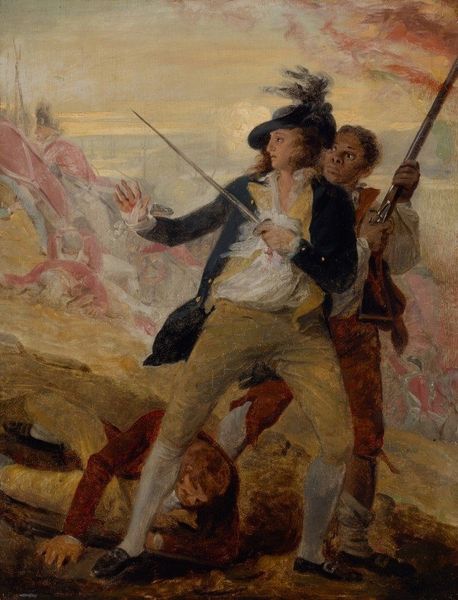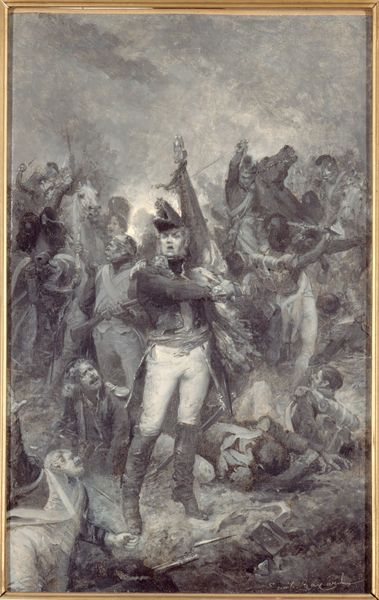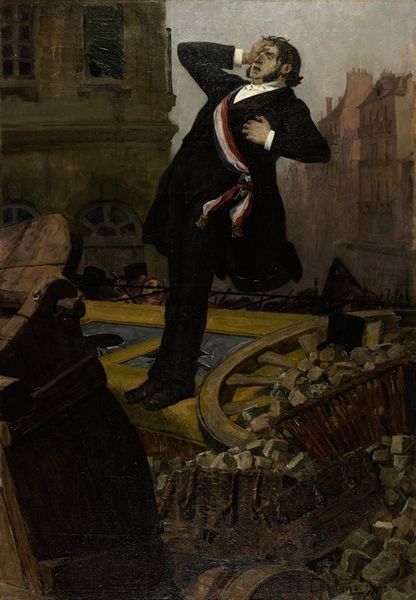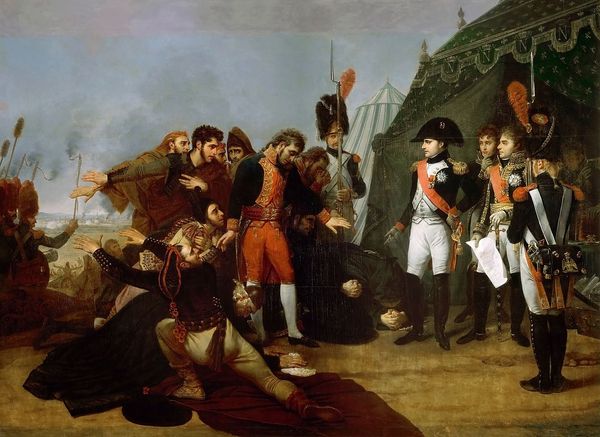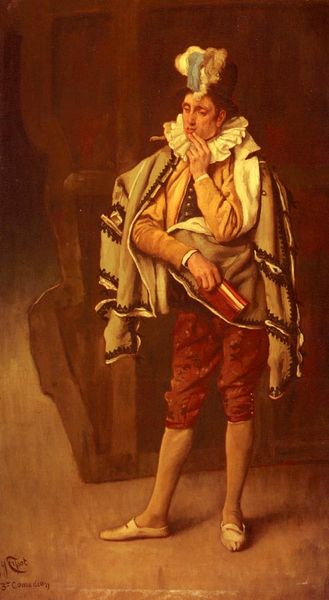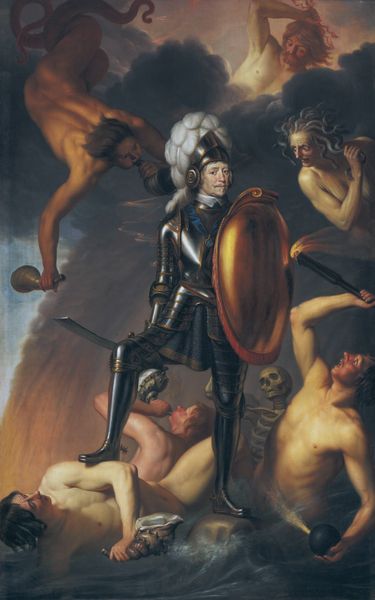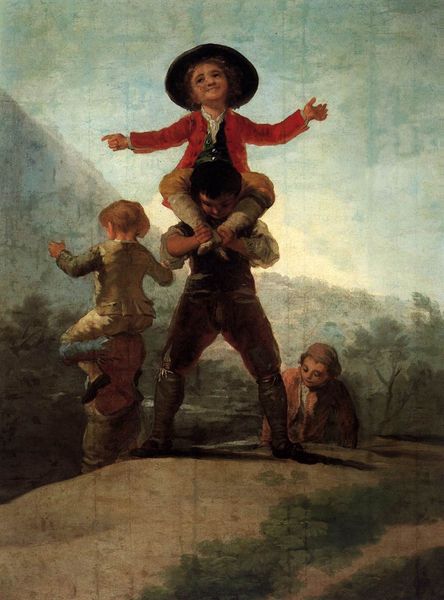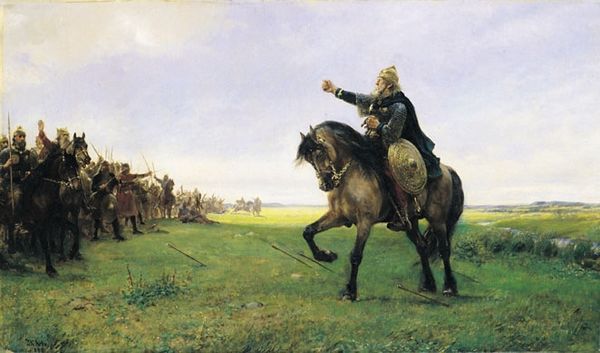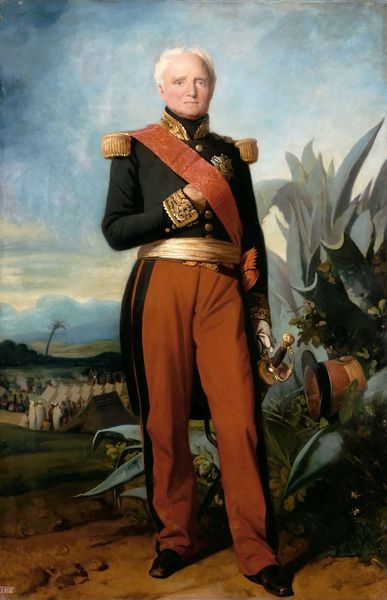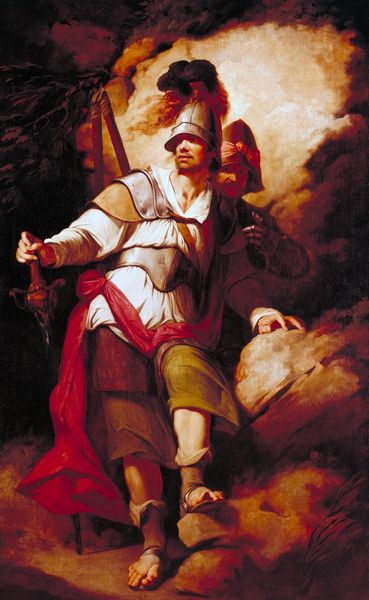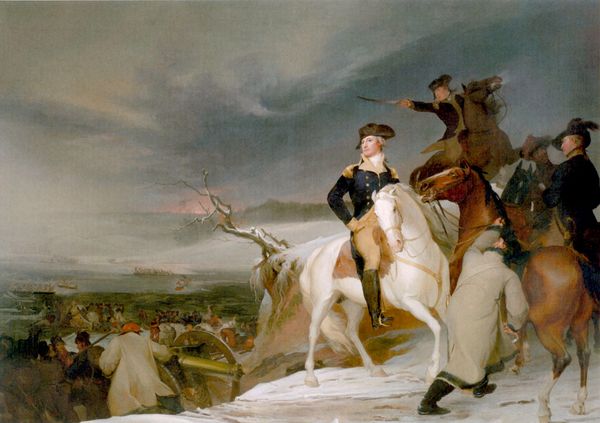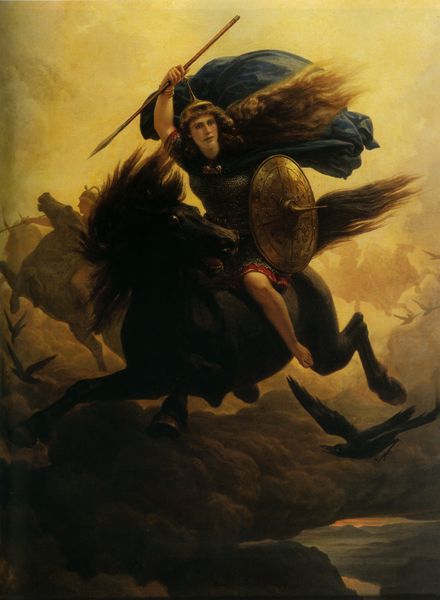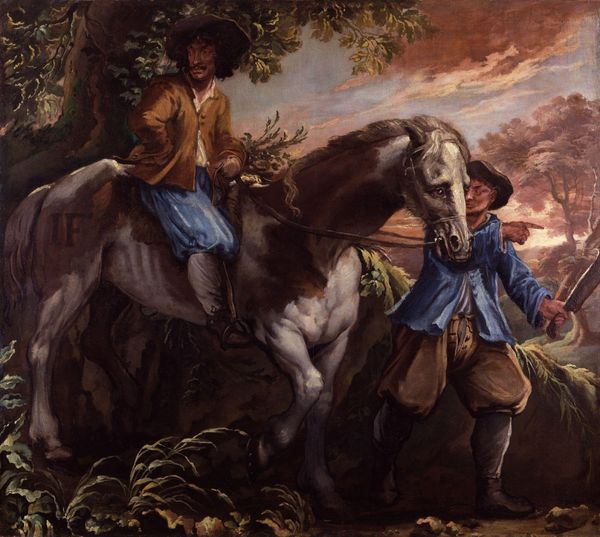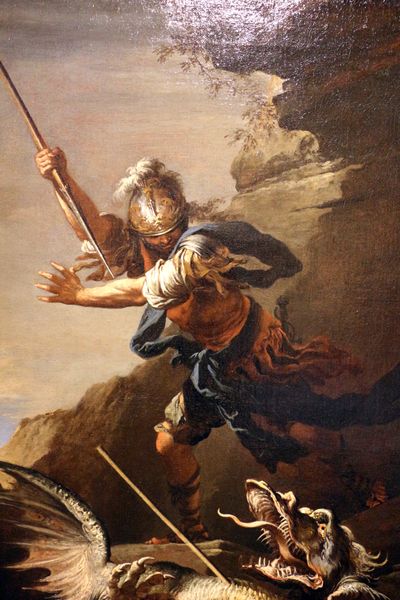
painting, oil-paint
#
portrait
#
painting
#
oil-paint
#
figuration
#
romanticism
#
history-painting
Dimensions: 140 x 216 cm
Copyright: Public domain
Curator: This oil painting, executed by Pierre-Narcisse Guerin in 1817, depicts "Henri de La Rochejaquelein, Leader of the Revolt in the Vendee". Editor: The dynamic asymmetry strikes me immediately – the almost severe vertical lines juxtaposed with that compelling, diagonally extended arm. It generates such active tension. Curator: Absolutely. That diagonal line, created by his arm and pistol, cuts across the composition, energizing it. Consider too how Guerin manipulates color. The stark contrast between the black coat and pale yellow trousers draws the eye directly to La Rochejaquelein. It’s a masterful strategy to ensure his figure dominates the scene. Editor: That color combination has a specific significance. Black traditionally represents mourning, grief and yellow is often associated with nobility and betrayal, so here, does that contrast play into a larger narrative around revolution and the royalists who lost their lives for the monarchy? Curator: Precisely. He’s framed by a sea of swords and a standard emblazoned with “Vive Le Roi,” situating him within a clear symbolic context – a defender of the monarchy during the Vendée uprising. Look at the brushwork too. There's a formality and almost clinical precision to La Rochejaquelein himself, contrasting sharply with the blurred, more energetic depiction of his men and the surrounding chaos. Editor: It’s almost as though he's elevated beyond the turmoil, a romantic hero embodying an idealized, yet tragically flawed, principle. His gaze, directed beyond the immediate fray, reinforces that. In art history, gestures towards a new epoch or golden age are common motifs. Curator: Indeed. Guerin positions him as a beacon of hope or a symbol of defiance. He presents us not just with a historical figure, but with an allegorical representation of royalist resistance. His body positioning is also crucial, placing himself above the fray shows an assumed power of command. Editor: I’d agree. I came to the image focused on the striking figure of La Rochejaquelein himself and the overall energy of the brush strokes; but, it becomes increasingly evident how that interplay, supported by color symbolism and figurative gesture, enhances the historical subject. Curator: Agreed. This painting serves as a fine reminder of the potency that arises when structure and symbolism convene so compellingly within a single frame.
Comments
No comments
Be the first to comment and join the conversation on the ultimate creative platform.
